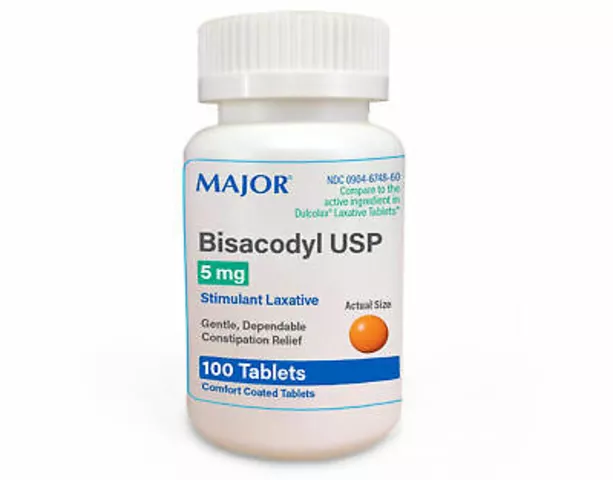Ever wonder why some breeders or vets use a drug called cabergoline with dogs or other pets? It isn’t just about trying the latest fad. Cabergoline actually helps with hormone-related issues, especially in situations where timing really matters, like breeding or stopping unwanted lactation.
Vets turn to cabergoline when they need to manage certain hormone levels that aren’t behaving—think false pregnancies in dogs or breaking the cycle for female animals that keep coming back into heat. This isn’t some sketchy shortcut, either. It’s a medication with plenty of research behind it, offering a targeted way to fix problems that would otherwise mess up a breeding plan or make life uncomfortable for your pet.
Of course, like anything you give an animal, you want to know what you’re really signing up for. That means understanding how cabergoline actually works inside the body, what issues could pop up, and what warning signs to keep an eye out for. It’s not magic, but for the right cases, it saves a ton of stress—for both pets and their owners.
- What Actually Is Cabergoline?
- Main Uses in Veterinary Practice
- How Cabergoline Works in Animals
- Risks, Side Effects, and What to Watch For
- Tips for Safe and Effective Use
- Questions Vets Get Asked Most
What Actually Is Cabergoline?
Cabergoline is a cabergoline drug that mainly acts on a brain chemical called dopamine. In regular human medicine, docs use it for things like treating Parkinson’s disease or pituitary problems. But in veterinary medicine, it’s mostly about fixing hormone imbalances in animals—especially dogs.
Here’s the deal: cabergoline sticks to dopamine receptors in the brain. When it does this, it stops the body from pumping out too much prolactin, a hormone that’s key for milk production and several reproductive cycles in animals.
So why do vets care about prolactin? In dogs, if prolactin goes a little wild, you can end up with false pregnancies or lactation when there are no puppies around. Male dogs aren’t usually the target here, but for breeding bitches, less prolactin can make things a lot simpler.
- Cabergoline is usually given in tablet or oral liquid form. There aren’t dog-specific brands, but the same pills made for people get carefully dosed for animals.
- The drug is pretty potent and long-lasting. Most animals only need it once daily or even every other day, depending on the vet’s advice.
- It’s not a painkiller or a wonder cure—it’s all about hormonal control. If your dog doesn’t need that, cabergoline won’t help with unrelated problems.
Here’s a quick look at how vets usually see it:
| Type of Animal | Main Use |
|---|---|
| Dog | Stops false pregnancies, ends heat cycles faster |
| Cats (rare) | Can help with certain breeding or lactation issues |
| Rabbits/rodents | Hardly ever used but sometimes tested in breeding colonies |
Bottom line: cabergoline isn’t some mysterious chemical. In the world of animal health and dog breeding, it’s a focused tool for managing those tricky hormones when other options won’t cut it.
Main Uses in Veterinary Practice
When it comes to cabergoline in veterinary medicine, it isn’t just a one-trick pony. The biggest reason vets reach for it is to deal with unwanted milk production—also known as pseudopregnancy or false pregnancy—in female dogs. This happens when a dog’s hormones get confused after heat, and she starts acting like she’s got puppies, even if she doesn't.
Cabergoline stops the milk by lowering the hormone prolactin, which plays a big role in lactation. You’ll see it used not just by breeders but regular pet owners when their female dog acts restless, nests, or starts producing milk for no real reason. Dr. Karen Tobias, a professor of veterinary surgery, puts it like this:
“Cabergoline is often the first choice for stopping unnecessary lactation in bitches, working faster and with fewer side effects than older drugs.”
But that’s just the start. This drug helps manage reproductive cycles in dogs and sometimes cats. Got a breeding program that needs perfect timing? Cabergoline can help bring a female dog out of heat or get her ready for the next breeding window. It’s also used to treat some male reproductive issues tied to hormone imbalances, though that’s less common.
In some advanced clinics, cabergoline helps shrink pituitary gland tumors caused by prolactin surges. While not standard, it’s an option that shows how flexible this drug is in animal health care.
Here’s a snapshot of the main ways vets put cabergoline to work:
- Stopping false pregnancy in female dogs (most common use)
- Ending unwanted lactation after spaying or unsuccessful breeding
- Adjusting or stopping the reproductive cycle for breeding plans
- Managing hormone-driven problems like certain tumors (in specific cases)
- Rarely, helping with hormone issues in male animals
Just to put things in perspective, one survey in 2023 found that nearly 40% of veterinary clinics handling breeding cases used cabergoline as their go-to treatment for pseudopregnancy. That tells you it’s not some rarity on the shelf—it’s a tool plenty of vets trust every day.
How Cabergoline Works in Animals
So, how does cabergoline actually do its job in animals? It all comes down to hormone control. Cabergoline acts on the brain, specifically blocking a signal called dopamine. When dopamine increases, it shuts down a hormone called prolactin. Why does that matter? Well, prolactin is the stuff that makes female animals produce milk or stick to behaviors like nesting—even when there’s no real pregnancy going on.
By lowering prolactin, cabergoline can stop or shorten things like false pregnancy in dogs. It makes a difference for breeders who don’t want to wait weeks for a female to be ready to breed again. Vets also pick cabergoline when they need to dry up milk in pets that shouldn’t be nursing anymore. It’s fast, and you’ll sometimes see changes in just a couple of days.
Here’s a basic idea of what happens after an animal gets cabergoline:
- Cabergoline is given by mouth, usually as drops or pills.
- It gets absorbed in the gut, then heads to the bloodstream.
- In the brain, it boosts dopamine, which tells the pituitary gland to stop sending out prolactin.
- Prolactin levels drop, and behaviors like milk production or false pregnancy symptoms fade out.
Most dogs handle cabergoline pretty well, but every animal is a bit different. Doses can be adjusted if the vet thinks it’s needed.
| Average Onset Time | Main Use | Typical Duration |
|---|---|---|
| 24-72 hours | Stop false pregnancy, end lactation | About 5-7 days |
If you’re using cabergoline for breeding, timing is everything. Vets will often track hormone levels or behavior to get the best results. It’s not just about popping a pill—it’s about having a plan that fits the animal’s needs.

Risks, Side Effects, and What to Watch For
Just because cabergoline works well in veterinary medicine doesn’t mean it’s risk-free. Vets are careful with it for a reason. Side effects do pop up—and while most are pretty mild, you still need to know what to expect, especially if you’re handling a breeding animal or a pet with special needs.
The most common side effects in dogs and other animals are stomach-related. You might notice:
- Loss of appetite
- Vomiting
- Diarrhea
Some animals get a bit tired or seem "off" after taking cabergoline. This is usually temporary, but if your pet acts completely different or gets worse, call your vet right away. In rare cases, dogs can show low blood pressure, fast heartbeat, or weakness. It’s not super common, but you don’t want to miss it.
Cats and exotic pets haven’t been studied as much, so vets use extra caution and keep a closer watch for anything out of the ordinary. Swelling, odd behavior, or drastic changes in thirst and urination are all red flags.
Here’s a quick breakdown of side effect frequencies based on recent veterinary data:
| Side Effect | How Often It Occurs |
|---|---|
| Loss of Appetite | Up to 25% |
| Vomiting | About 15% |
| Diarrhea | Roughly 10% |
| Lethargy | Under 10% |
| Low Blood Pressure | <1% |
Some animals shouldn’t get cabergoline at all. Pregnant females, especially late in pregnancy, are at risk, since cabergoline can affect hormones crucial for healthy pregnancies. Always tell your vet if the animal takes any other meds, because certain drugs don’t mix well with cabergoline and might boost the risk of side effects.
If you’re caring for a pet taking cabergoline, here’s what helps: give the medicine exactly as the vet says, watch for stomach or behavior changes, and have your vet’s number handy in case something weird happens. Quick action can mean a minor issue doesn’t turn major.
Tips for Safe and Effective Use
If you’re thinking about using cabergoline for your pet, following some key safety tips is a must. Vets don’t just hand over this med and hope for the best—there’s a right way to do it to keep animals healthy and avoid headaches down the road.
- Never dose on your own. The number one rule: always talk to your vet before giving any cabergoline. Dosage depends heavily on species, size, and the animal’s health.
- Stick to the vet’s schedule. This drug usually comes as tablets or drops, and missing a dose or giving too much can mess up hormone cycles. Even one extra dose could add days to a female’s false pregnancy or make things worse.
- Watch for side effects. Most common are vomiting, loss of appetite, or acting tired. Some dogs might drool or pace more. Call your vet if you spot anything weird.
- Don’t mix meds without asking. Cabergoline can clash with some antibiotics or heart meds. Give your vet a full list of what your pet takes—saves a lot of guesswork and risk.
- Keep records. Jot down when you start and stop meds, plus any changes in your pet’s behavior. This seriously helps if your vet needs to adjust the plan. Some breeders even use spreadsheets to keep track.
- Store it right. Most forms of cabergoline need to be kept in a dry spot at room temp, away from sunlight. Don’t stick it in a fridge unless the label says so.
If you’re nervous about dosing, vets usually recommend using a syringe for drops, especially with smaller animals like cats. And don’t be shy about asking for a quick demo at the clinic—most staff are happy to walk you through the first dose.
| Side Effect | Occurrence Rate (%) |
|---|---|
| Vomiting | 26 |
| Lethargy | 19 |
| Loss of Appetite | 15 |
| Restlessness | 9 |
Bottom line: use cabergoline only with real guidance, don’t take shortcuts, and check in if anything feels off. You want the best shot at a smooth recovery or smooth breeding cycle—and that starts with sticking to what actually works.
Questions Vets Get Asked Most
If you talk to any vet about cabergoline, there’s a set of questions they hear over and over. People want straight answers before letting their dogs or animals take any medication, and honestly, who can blame them?
1. Is cabergoline safe for my pet?
Most healthy dogs and cats do fine with cabergoline when it’s given in the right dose. Serious side effects are rare, but some animals can puke, lose their appetite, or act a bit restless. If your pet has liver problems, it’s best to tell the vet upfront, since the drug breaks down in the liver.
2. What is cabergoline actually used for in vet medicine?
It’s mainly used for stopping false pregnancies in female dogs, drying up milk production, or helping to bring female animals into heat at the right time. Some vets use it to treat certain tumors that depend on hormones, especially in ferrets or rabbits. The science comes down to lowering prolactin, which is a hormone that tells the body to make milk.
3. How do you give cabergoline, and how long does it take to work?
Most vets use cabergoline as a pill or liquid, and it’s usually given once a day for 5–7 days. But the timing can change depending on what problem you’re solving. Animals usually start to show changes (like less milk or calmer behavior) within a few days, but you might need to finish the whole course.
4. Are there long-term risks with cabergoline?
For most animals, short-term use is safe. There’s not much research on what happens if you use it over and over long-term. That’s why it’s not a ‘set it and forget it’ drug—always follow up with your vet after a round of cabergoline.
5. Does cabergoline interact with other medications?
Yes, it can. Some drugs that mess with blood pressure or certain antidepressants might not play well with cabergoline. Always show your vet a list of everything your pet takes—even supplements.
| Common Question | Cabergoline Fact |
|---|---|
| Time to see effect | Usually within 3–5 days |
| Main side effect | Mild nausea or decreased appetite |
| Safe for pregnant animals? | No, not recommended |
| Prescription needed? | Yes, always |
Before using cabergoline, always talk to your vet about why your animal needs it, what the expected results are, and what to do if something feels off. Good vets welcome your questions, even the tough or awkward ones.








Oh wow, another post about cabergoline like it's the holy grail of canine hormone sorcery. Let me guess-next you'll tell me dopamine is a dog whisperer and prolactin is the devil in a lab coat. I mean, sure, it works... but only because we've turned veterinary medicine into a 24/7 hormonal IKEA assembly manual. At least the side effects are cheaper than therapy. 🤡
While I appreciate the thoroughness of this exposition, I must express my profound respect for the precision with which veterinary pharmacology is being contextualized within the framework of canine endocrinology. The distinction between therapeutic intent and anthropomorphic extrapolation is not merely academic-it is ethically imperative. That said, I do wonder: has any longitudinal study been conducted on the behavioral sequelae of prolactin suppression in non-breeding companion animals? I remain, as ever, respectfully inquisitive.
Man this post is so helpful! I had a dog last year who started making milk after her heat and i was so scared she was sick. Took her to the vet and they said 'oh yeah, false preg' and gave her this pill. She was like a new dog after 3 days-no more nesting, no more whining at socks. Just chill. Thanks for laying it out so clear. 💪
It's fascinating how we've turned the natural, sacred rhythm of animal biology into a problem to be solved with pharmaceuticals. We don't just manage prolactin-we pathologize it. We don't just treat false pregnancy-we weaponize dopamine receptors to suppress the very instinct that once sustained species continuity. Is this progress? Or is this just another chapter in humanity's long, lonely saga of trying to outsmart nature with a clipboard and a prescription pad? I'm not judging-I'm just... observing the silence after the pill is swallowed.
Of course you're not warning people that this stuff is basically a hormone grenade. If your dog starts acting like a zombie who lost her will to live, don't come crying to me. I've seen too many 'natural breeders' treat their dogs like hormone-controlled factory units. Cabergoline isn't a tool-it's a Band-Aid on a broken system. And you're all just fine with that? 🙄
My aunt's border collie took this after a false pregnancy. Didn't even throw up. Just slept for two days and then went back to chasing squirrels like nothing happened. Honestly? Kinda wish I had this for my own life.
Lmao this whole thing reads like a vet textbook written by someone who thinks 'dopamine' is a new flavor of dog treat. You got 40% of clinics using it? Cool. What about the 60% who just tell the owner to 'give her a walk and a hug'? Maybe the dog just needs less stress and more belly rubs. Also, why are we even giving humans pills to dogs? That's like feeding your cat your Adderall because it's 'the same chemical'. 😂
Let’s be brutally honest: cabergoline is not a 'tool.' It’s a chemical scalpel wielded by people who’ve lost touch with the organic, messy, beautiful chaos of animal biology. We don’t need to 'manage' prolactin-we need to stop treating pets like programmable machines. And yet, here we are: prescribing dopamine agonists to fix a problem created by our own breeding agendas. The irony? The very system that demands this drug is the one that created the problem in the first place. And you? You’re just here to applaud the algorithm. 🤖
Wait so you're telling me this isn't just a fancy way to stop dogs from being 'too emotional'? Like, I thought false pregnancy was just a dog thing where they get clingy and start stealing socks? Why do we need a drug for that? My grandma's mutt did that every year and we just gave her extra treats. Problem solved. Also, 'prolactin'? Sounds like a brand of yogurt. 😴